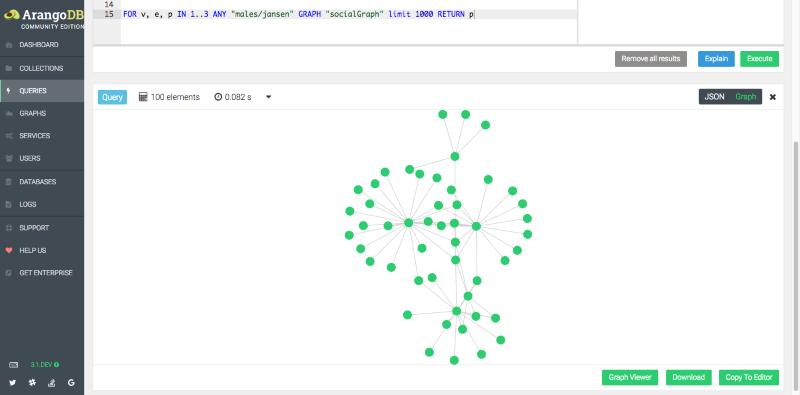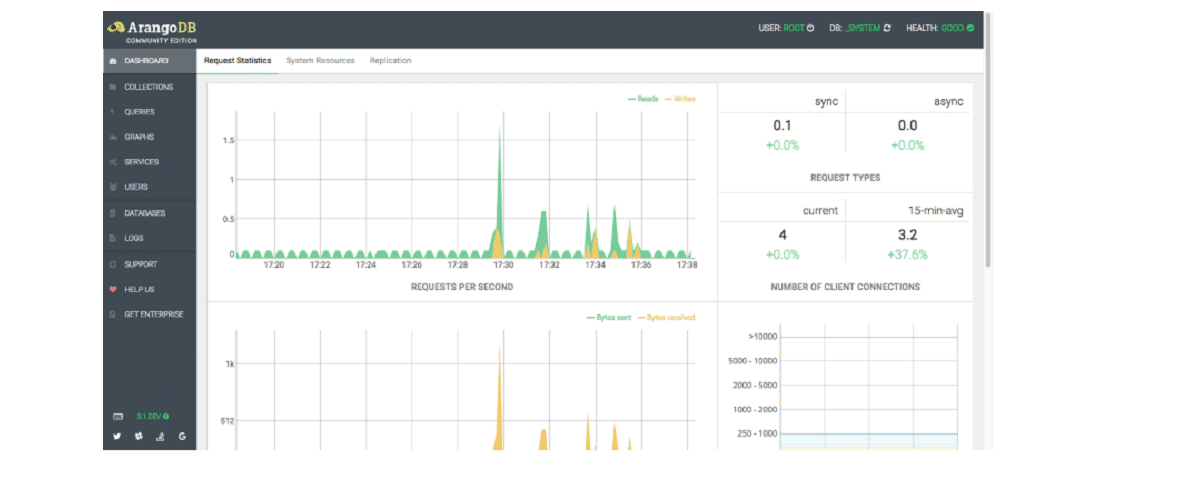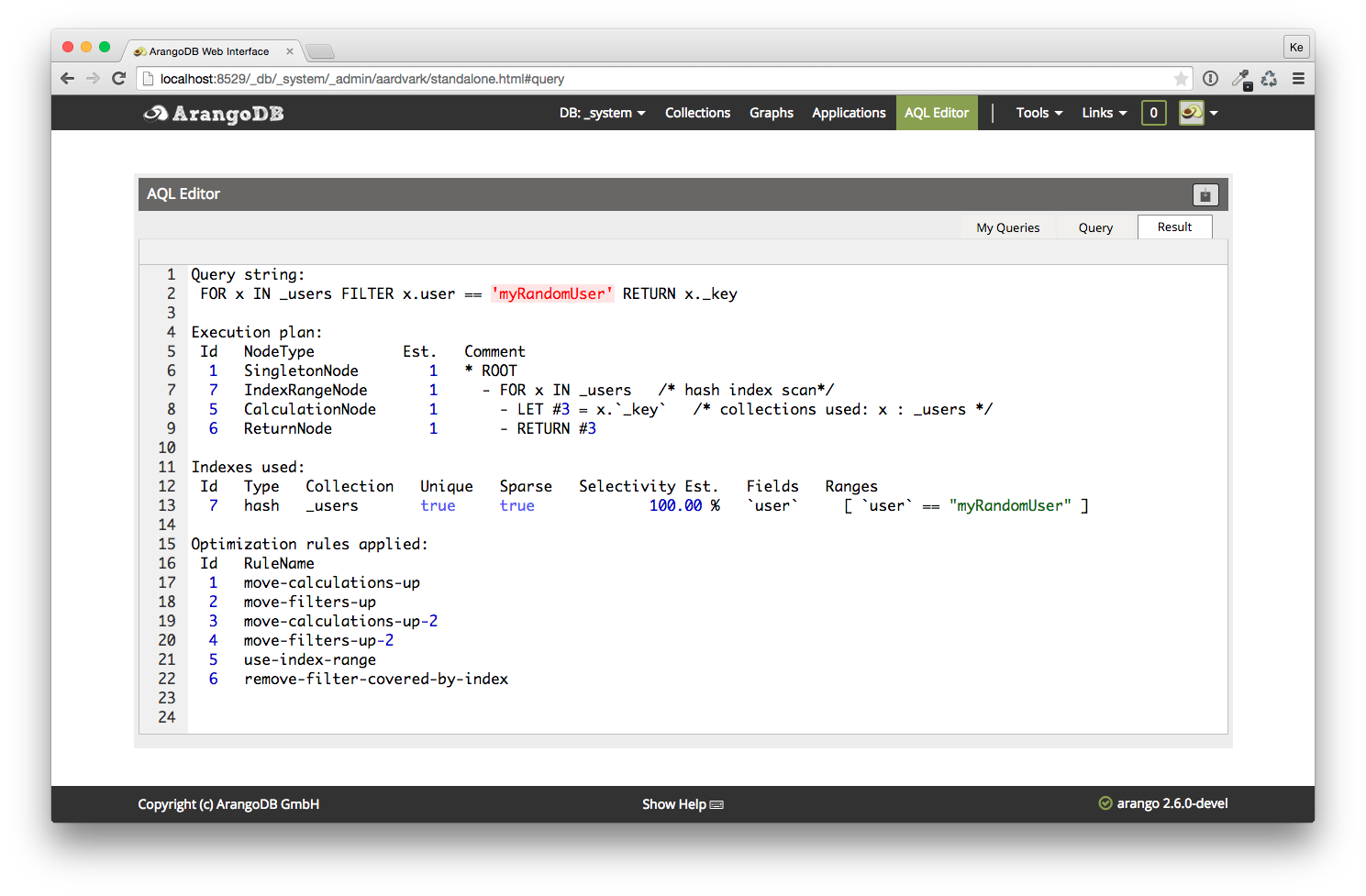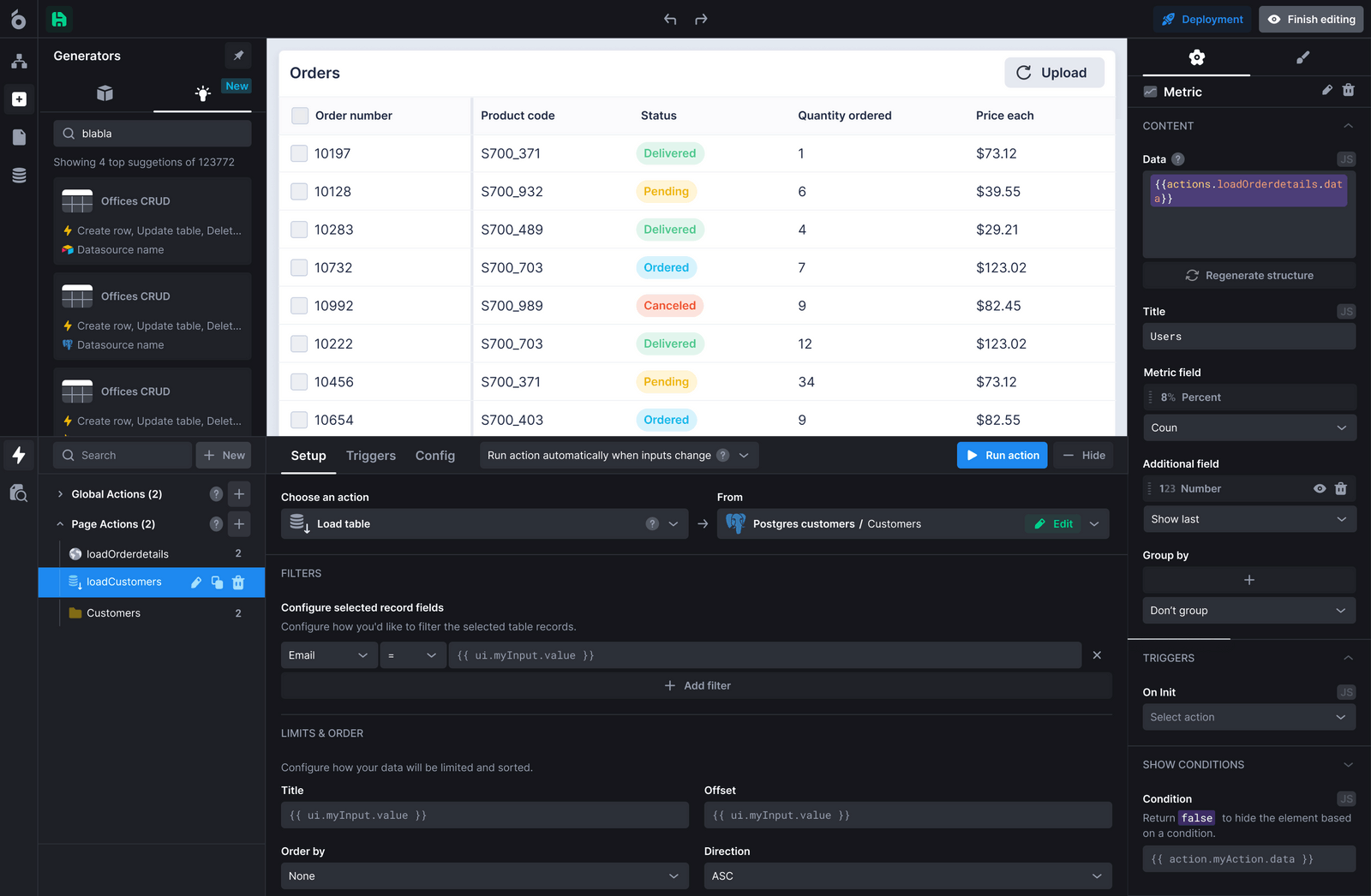

- #Arangodb ui how to#
- #Arangodb ui install#
- #Arangodb ui full#
- #Arangodb ui password#
- #Arangodb ui download#
Here’s a simple example of a Foxx service: 'use strict' Ĭonst createRouter = router = createRouter()


The syntax is similar to the Express framework for Node.js. It lets you write standard V8 JavaScript, and create REST endpoints that can return ArangoDB queries. Step 3: Write a Foxx microserviceįoxx is a JavaScript framework that runs inside the ArangoDB container. The ArangoDB website has some great AQL resources to help you return custom results. }], FLATTEN(FOR v, e IN 1 ANY start GRAPH 'movies-graph' It means we can present our JSON result in a KeyLines-ready format, without any client-side processing.įor example, to request a specific actor and their direct connections, run: LET start = (FOR a IN actor FILTER a.name = 'Keanu Reeves' RETURN a) To find movies that Keanu Reeves acted in, run: LET start = (FOR a IN actor FILTER a.name = 'Keanu Reeves' RETURN a)įOR movies IN 1 OUTBOUND start GRAPH 'movies-graph' RETURN moviesĪ great feature of ArangoDB is that we can use JavaScript syntax to decide how query results should be returned. These results are a starting point that we can build on. For example, to find Keanu Reeves in the database, in the “Queries” section of the movies database dashboard, run: FOR a IN actor FILTER a.name = 'Keanu Reeves' RETURN a To make querying ArangoDB easier, the team have created the Arango Query Language (AQL). See ArangoDB’s documentation on importing data. Due to the way we created the JSON files, this is just ArangoDB’s way of telling us that it will not create a vertex more than once, which isn’t a problem for us.ĭon’t forget to add the options ––server.password or ––ername if you have different credentials. These may look scary but are completely safe to ignore. You may see some warning messages in the console about ‘unique constraint violated’. We’ll run these commands to import it into our database: arangoimport -server.database movies -file movies.json -collection movieĪrangoimport -server.database movies -file actors.json -collection actorĪrangoimport -server.database movies -file links.json -collection links
#Arangodb ui download#
The movies data is in three JSON files, which you can download from the ArangoDB demo on our SDK site. Now we’ve set up our collections and graph, we can import the data.ĪrangoDB comes with a command-line tool ‘arangoimport’, which makes it easy to import data from different formats. (Note: vertex is a graph database term for node, and an edge is a link). We’ve defined the graph with a single edge collection and 2 collections for vertices. Next, create a graph called ‘movies-graph’ with this setup: two document collections called ‘movie’ and ‘actor’.Then switch to the dashboard for the newly created database and create: So, using the ArangoDB web interface, first create a new database called ‘movies’. In this example, we’ll build a network of movies and actors to explore in a KeyLines application. Go to to see ArangoDB’s neat web interface. See the ArangoDB tutorial on managing users.
#Arangodb ui password#
It’s best to create a user or change the root password before you continue. You can run commands in the shell interface called ‘arangosh’. For this ArangoDB tutorial, we used a Mac and installed the database via Homebrew, so at the command line we enter:
#Arangodb ui full#
There are full instructions in their excellent getting started guide.
#Arangodb ui install#
Step 1: Set up ArangoDBĭownload and install the latest ArangoDB version. ArangoDB combines the advantages of a document, key-value and graph database with good performance and scalability.ĪrangoDB can work with KeyLines to power a robust graph visualization application. One way to avoid these problems is to use multi-model databases like ArangoDB. Deploying to multiple database technologies in a single project is complex and has a greater maintenance overhead. This approach, known as polyglot persistence, ensures good performance but presents challenges. Highly connected data -> graph database, etc.

What is a multi-model database?ĭatabase technologies are optimized for specific types of data:
#Arangodb ui how to#
This tutorial describes how to connect KeyLines to ArangoDB – a native multi-model database that combines the strengths of graph, document and key-value stores. To follow this tutorial, and access the data files listed, you’ll need a KeyLines evaluation account.


 0 kommentar(er)
0 kommentar(er)
